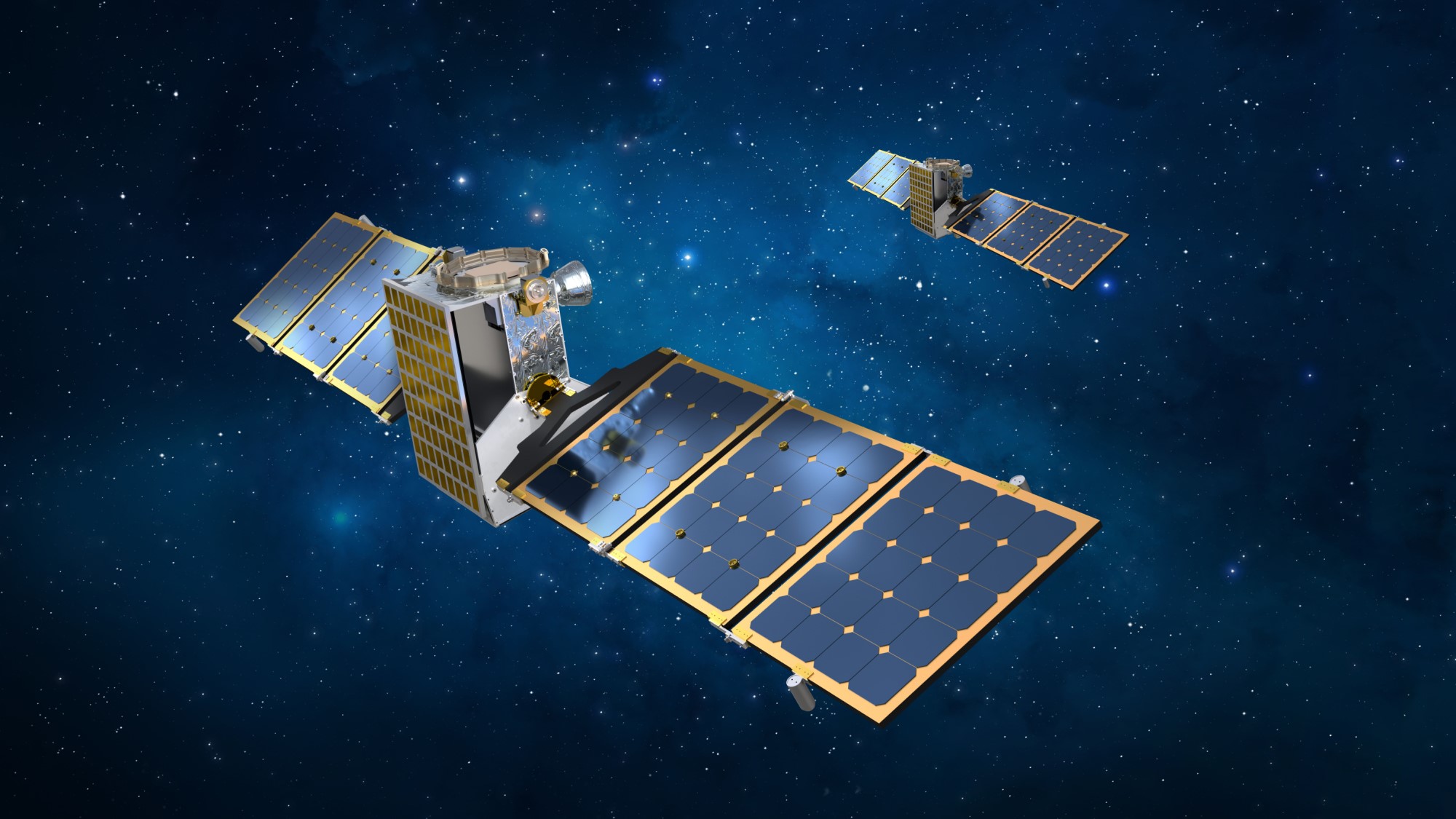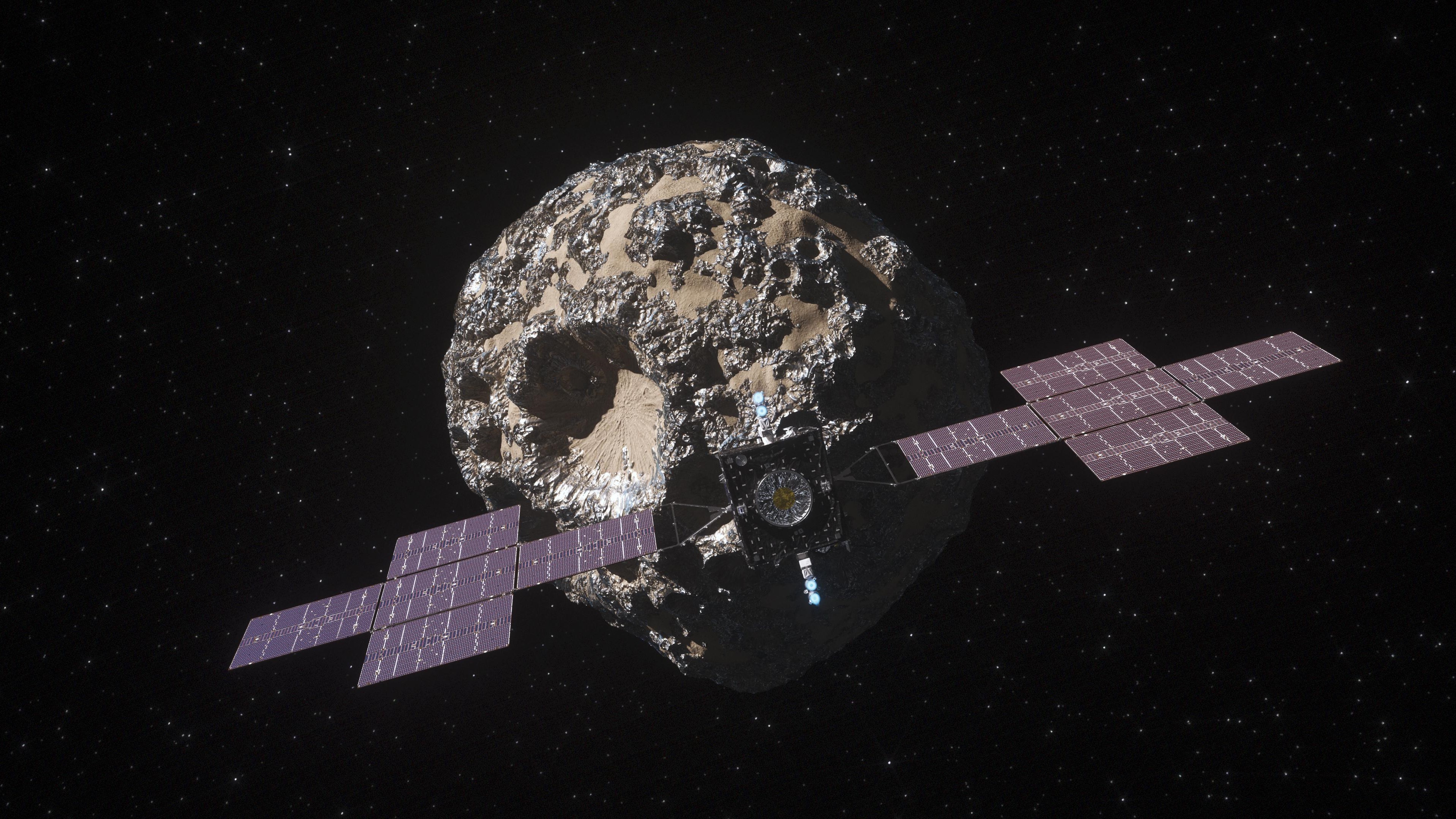
NASA has put its Janus asteroid mission on ice after a launch delay made the twin probes' target systems inaccessible.
The two small Janus spacecraft were originally supposed to launch with the agency's larger Psyche spacecraft atop a SpaceX Falcon Heavy rocket in August 2022. But NASA postposed the planned liftoff after issues arose with Psyche's flight software.
The Psyche team has since righted the ship, getting the mission on track for a launch this coming October. But that 14-month delay resulted in a changed trajectory that put the Janus probes' science targets — two binary near-Earth asteroid systems — out of reach. And the agency has now decided to shelve the ride-along probes.
"After considering the opportunities and requirements for alternative missions using the twin spacecraft, and the expected resources available to planetary science in the next few years, NASA has decided to stand down further work on the Janus mission," NASA officials wrote in an update on Tuesday (July 11).
"The project will complete the contracted work remaining on the two spacecraft and then prepare them for storage in the event that future funding may enable an opportunity to utilize the spacecraft," they added.
Related: Asteroids: Fun facts and information about space rocks
Janus is part of NASA's SIMPLEx (Small, Innovative Missions for Planetary Exploration) program. SIMPLEx aims to deliver big science results using small, inexpensive spacecraft that launch as "rideshares" on rockets toting bigger primary payloads.
For example, the Psyche spacecraft has a dry (unfueled) mass of about 1,400 kilograms (3,086 pounds), while each Janus probe weighs in at just 36 kg (79 pounds). And the Psyche mission's total price tag is $985 million, whereas SIMPLEx projects are capped at $55 million apiece.
"These lower-cost missions serve as an ideal platform for technical and architecture innovation, contributing to NASA's science research and technology development objectives," agency officials wrote in the Tuesday update, referring to SIMPLEx projects.

The Psyche mission will study its namesake asteroid, a 140-mile-wide (220 kilometers) metal-rich object in the main asteroid belt between Mars and Jupiter. The odd space rock could hold clues about the formation and evolution of rocky planets.
"Psyche might be the partial core of a shattered planetesimal — a small world the size of a city or small country that is the first building block of a planet," NASA officials wrote in a mission description. "If it is, asteroid Psyche can offer a close look at the interior of terrestrial planets like Earth, which is normally hidden beneath layers of mantle and crust."
The Psyche probe will reach its space-rock destination in August 2029, if all goes according to plan.
If it had launched last summer, the spacecraft would have arrived at Psyche in 2026. And it would have taken a trajectory that allowed each Janus probe to perform a flyby of a binary asteroid system — one on March 3, 2026 and the other on April 20 of that year.






